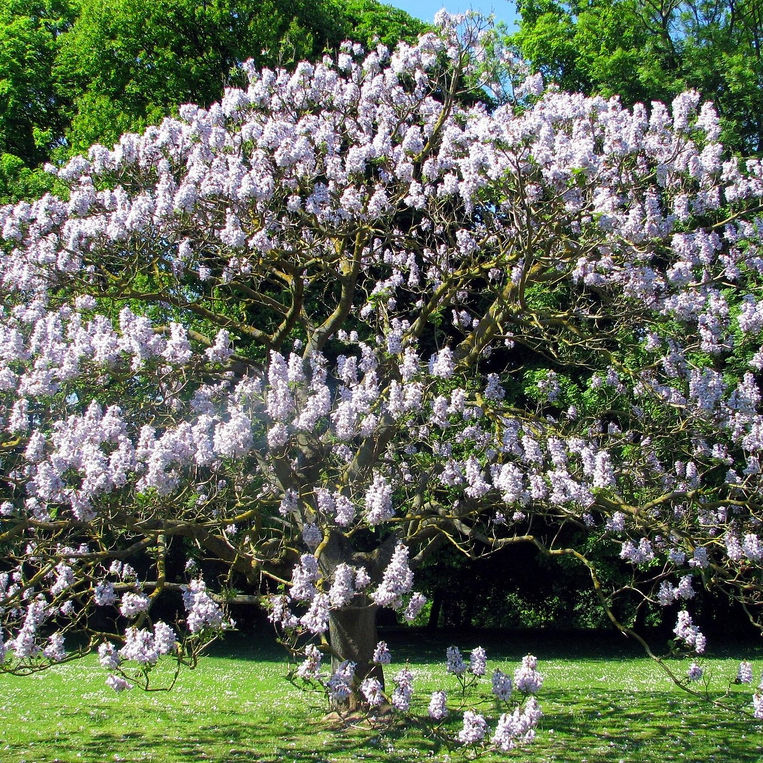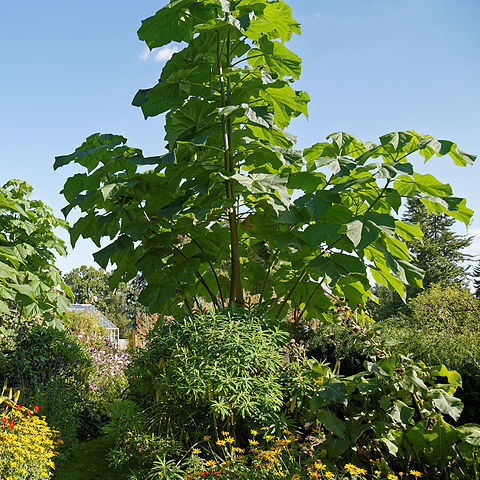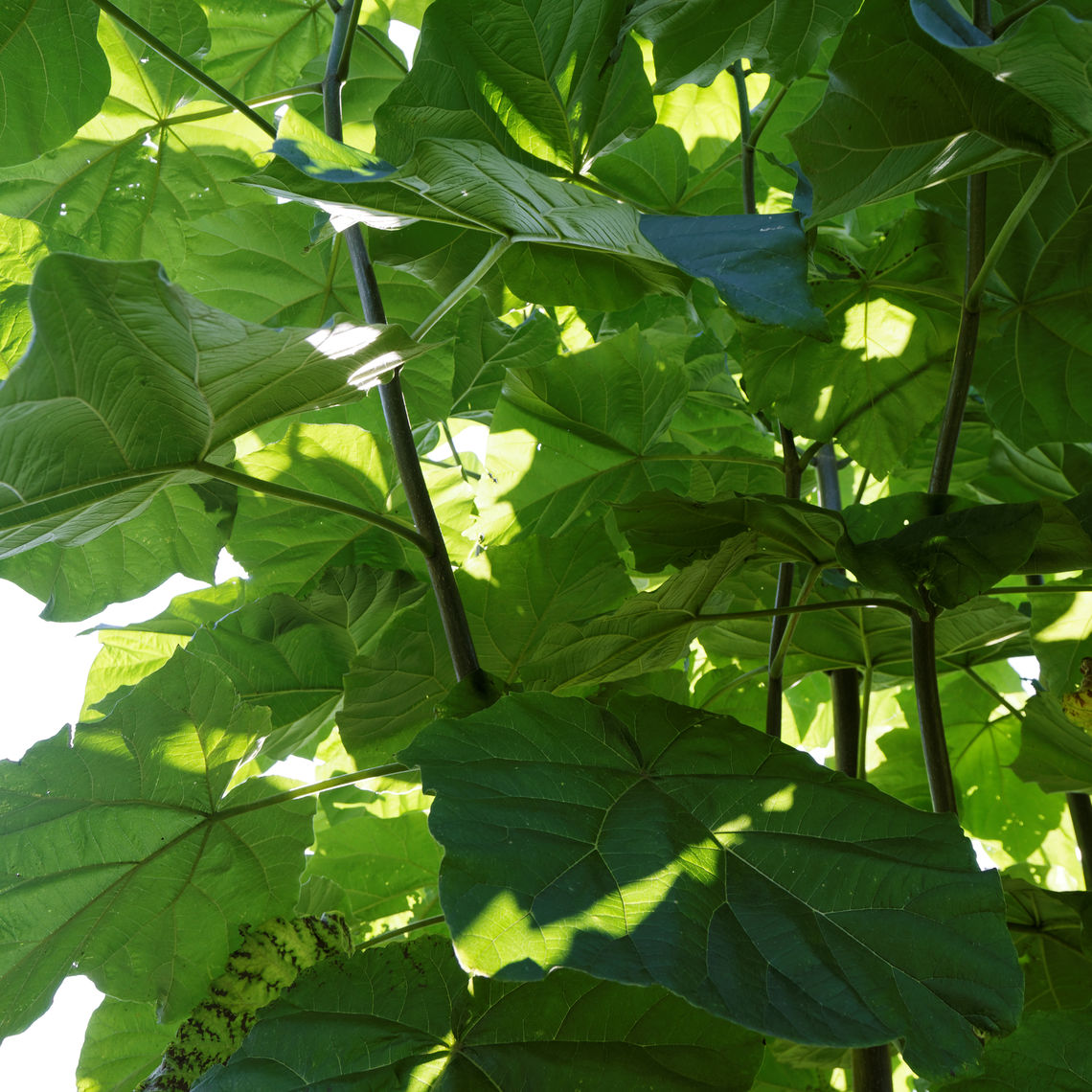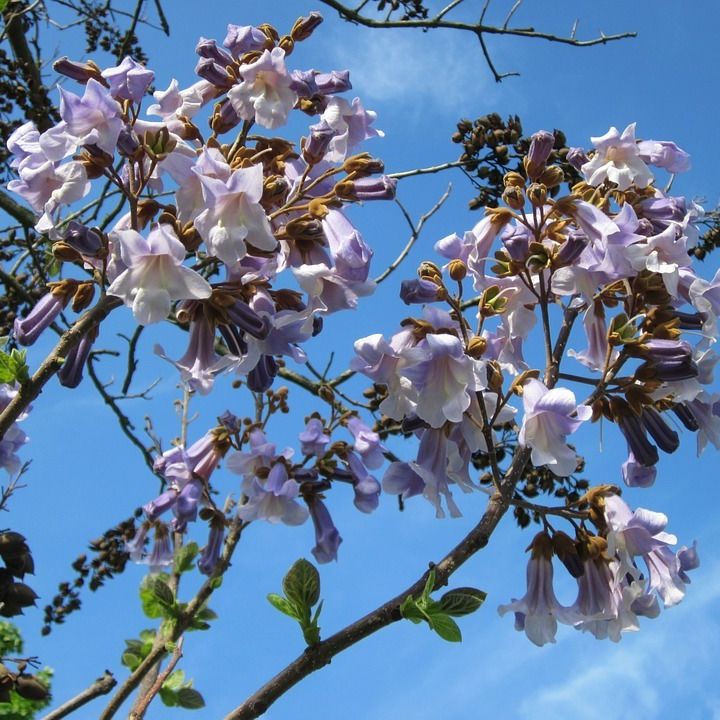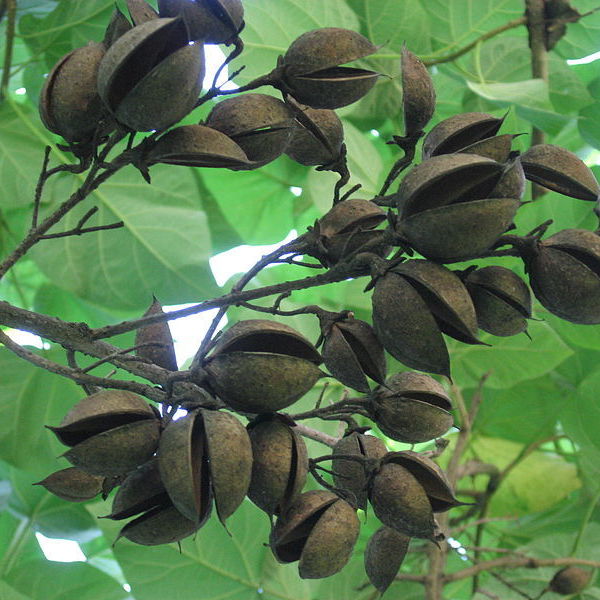Princess Tree (Paulownia tomentosa)
The princess tree, also known as royal paulownia, is a large, rounded tree. It is best known for its lavender colored, funnel-shaped flowers that appear in early spring before the leaves. These flowers give off a vanilla-like fragrance. The tree produces oval-shaped, woody fruits. Each fruit can hold up to 2,000 small, winged seeds. When ripe, these fruits split open and look like an open bird's mouth. The tree's leaves are large, green, and heart-shaped. In Japan, princess tree wood is commercially valuable.
Family: Paulowniaceae (Paulownia)
Characteristics: The 5-inch to 10-inch-long leaves are ovate and dark green. Leaves do not change color in the fall. In April-May, before the leaves emerge, lavender colored, fragrant, and funnel-shaped flowers begin to bloom in 14-inch-long clusters. The insides of these flowers have dark purple spots and creamy yellow stripes. These flowers are followed by 1-inch to 2-inch-long, woody, oval-shaped fruits, each of which hold 2,000 small winged seeds. When ripe, the fruit cracks open and looks like an open bird's mouth. This tree has a rounded shape and large and stiff branches. It grows 30-40 feet high and wide.
Foliage: Deciduous (leaves lost seasonally)
Geographic Origin: Central and western China (non-native)
Cultivation Notes: Requires medium maintenance. Does best in full sun, though can tolerate light shade. Prefers medium moist and well-drained soils. This tree can tolerate poor and dry soils, though should not be planted in clay soil. Since flowers buds are fragile, this tree should be sheltered from wind.
Number on Campus: 2
Sources: Dirr, Morton Arboretum, Missouri Botanical Garden

